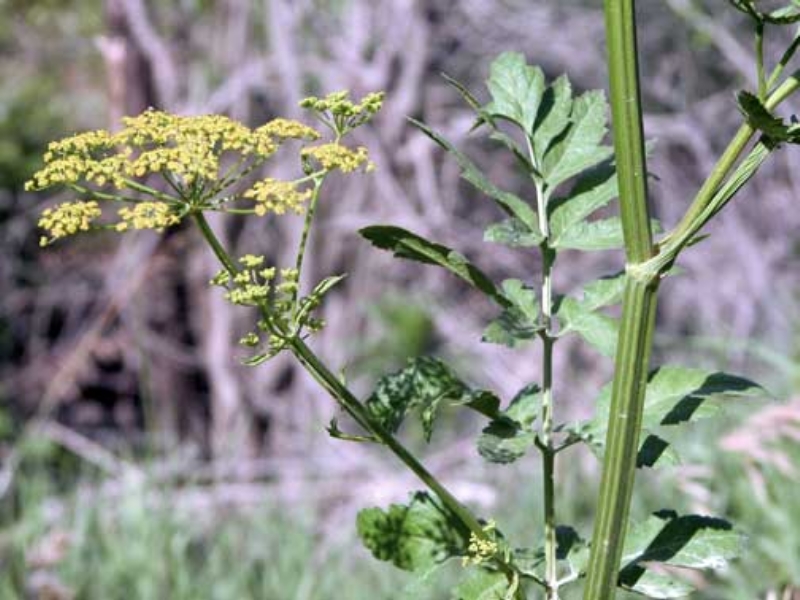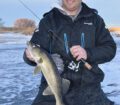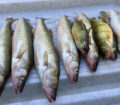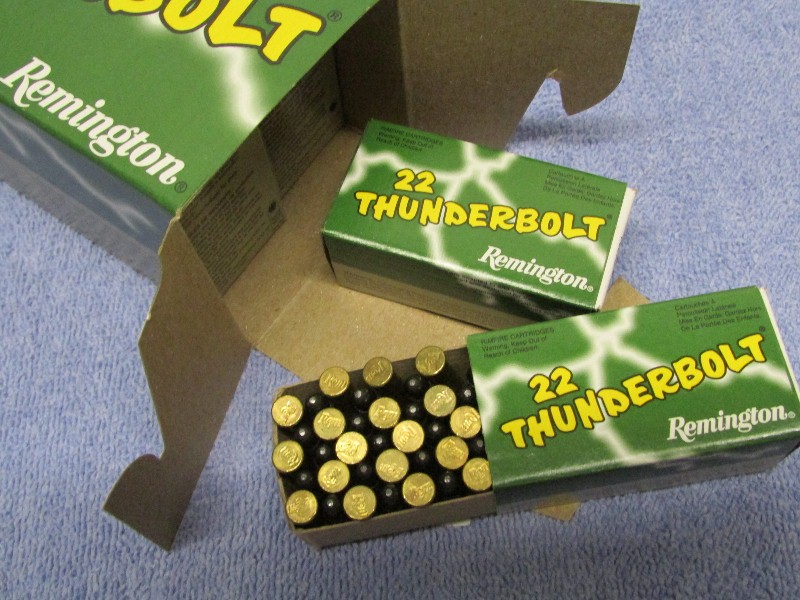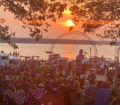by Steve Weisman
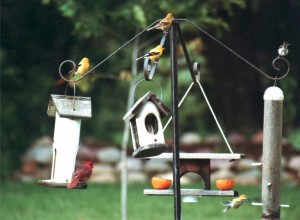 Most of my stories have been about hunting and fishing. However, there is another outdoor activity that is a huge, and I mean a huge business: backyard bird feeding. According to the U.S. Fish & Wildlife Service, a recent Census Report showed that over 65 million Americans enjoy backyard bird feeding, and it is one of the fastest growing hobbies. Annually, people are spending nearly $4.7 billion annually on everything from bird seed to accessories such as bird feeders, bird baths and nesting houses. It is a hobby that young and old alike can enjoy, and you don’t have to do it on a grand scale. Take it from someone who, along with my wife, has been a part of this hobby for the past 25 years.
Most of my stories have been about hunting and fishing. However, there is another outdoor activity that is a huge, and I mean a huge business: backyard bird feeding. According to the U.S. Fish & Wildlife Service, a recent Census Report showed that over 65 million Americans enjoy backyard bird feeding, and it is one of the fastest growing hobbies. Annually, people are spending nearly $4.7 billion annually on everything from bird seed to accessories such as bird feeders, bird baths and nesting houses. It is a hobby that young and old alike can enjoy, and you don’t have to do it on a grand scale. Take it from someone who, along with my wife, has been a part of this hobby for the past 25 years.
The fun thing about this hobby is that you can get as involved as you want. But first a word of caution. Just because you put out a feeder, don’t expect birds to be there in a few minutes. It might happen that way, but it might also take days and even weeks depending on the type of habitat you have around your home. Know also that you need to keep the bird feeders full. Letting the feeders sit nearly or totally empty will jeopardize the chances of regularly attracting birds. Consistency and good food are both extremely important.
The more trees and shrubs, the more birds you will have. In a new housing development with no trees and shrubs, it will take time. However, in that case, you can landscape for both aesthetic pleasure and birds.
Throughout the Midwest, there are garden centers and specialty stores designed just for bird feeding. They can provide guidance in all phases of bird feeding, so those people just getting started don’t have to figure everything out on their own.
So, how involved do you want to get and where do you want to have the birds come? Do you want the birds to feed right off the deck or outside a window so that you can watch all of the action? Remember that with the birds will come seeds and bird messes below. So, think about it first before you begin organizing your feeding station. I found that I did not want the mess all over our deck and in the planters below, so I put the feeders about 20 yards away and actually put a 10’ x 20’ cement pad down to catch a lot of the waste material. Then it’s easy for me to clean up and dispose.
You can put up one simple feeder, say a thistle feeder, and spend the year watching gold finches come and go. Add a feeder with an attraction mix of sunflower seeds, sunflower hearts, shelled peanuts, nuts, safflower seed, and raisins and in the Midwest you will get everything from cardinals to chickadees. Throw in a suet feeder and several kinds of woodpeckers will arrive. With these three, you now have the opportunity to view a variety of birds.
Plus, you have your ground feeding birds. Birds that feed at the feeders are notorious wasters. For every seed they eat, it seems they drop or waste three or four. For that reason, over time you can expect to get a lot of bird seed on the ground below the feeder. That’s where the ground feeders such as the junco and cardinals appear. At the same time, squirrels will have a field day eating the spilled seed.
One word of caution, however, has to do with squirrels. They are cute, when they are eating food off the ground and scampering here and there. However, they are also very destructive. If you don’t want them hogging your feeders and keeping the birds away, make sure to purchase squirrel-proof feeders or if the feeder is on a ground pole, secure a squirrel baffle below to stop the squirrels.
One of the most beautiful and easiest songbirds to attract to your backyard is the oriole. These brilliant orange, yellow and black birds have a real sweet tooth and will readily come to feeders from the time they arrive in the spring throughout the summer months. As the summer progresses, the adults will even bring their youngsters to feed. These birds simply love oranges and grape jelly, and there are a variety of platform-type feeders that have a place to put jelly and a spike on which to stick the orange halves. At the same time, orioles will also be attracted to special sugar water feeders because sugar water is similar to the flower nectar on which orioles naturally feed. Some oriole sugar water feeders are colored orange and have large perches to accommodate the birds. Orioles may also use hummingbird style nectar feeders. Fill the feeders with a solution of either 1 part white sugar to 4 parts water or 1 part white sugar to 6 parts water; both seem to attract orioles. Boil the water first for 1-2 minutes and then add the sugar. Let nectar cool. It is important to change the solution regularly, especially during hot weather. This recipe also works for Hummingbirds.
To be successful at attracting orioles, the filled feeder must be out in the spring before the birds arrive on their migration north. For us here in northwest Iowa, that means getting the jelly, orange halves and nectar out by late April to early May. If you don’t chances are the orioles will look elsewhere. Having it out after they arrive doesn’t seem to work as well.
One word of caution, as mentioned earlier is that unwanted wildlife will try to get to these feeders, especially the platform ones that hold the jelly and orange halves.
We’ve battled squirrels, starlings and grackles for years. Three years ago we found a cage at our garden center that covers our oriole feeders. The cage will not allow squirrels to enter or to grasp anything, while the little square holes are small enough that the larger unwanted birds cannot enter to get to the jelly and oranges. What is amazing is that the orioles land on the cage and within a few minutes, they have it figured out and are soon coming and going at will.
Here is the last piece of the puzzle. Birds need water to drink and to-yes-bathe! Moving water is even better, so if you locate a bird bath/fountain fairly close to your bird feeders, you will have birds flitting in and out all of the time. Again, keeping the bird bath clean is very important, because the birds will make it a mess, and in the summer it can get really warm and dirty. We use a wire brush and a container of fresh water to clean the surface.

